England got out of the Euro 2020 group stage with two victories and one draw, while Croatia waited until the last game to show their strengths and get an important win, which qualified them to the next round.
But the Three Lions’ performance in Group D was far from convincing. The team that are said to be the favourites to win the competition only scored two goals in three games.
While it is more important that they did get the wins, no matter the final result, their inability to convert their chances into goals is concerning, especially having in mind their next opponent in the Round of 16 – Germany.
There was an improvement in their last group stage game against the Czech Republic though. Even though they won 1-0 there were some positives in their display. Gareth Southgate made some changes in his starting XI which increased their attacking efficiency as well as their defensive performance.
The most prominent one was replacing Mason Mount and Phil Foden for Jack Grealish and Bukayo Saka in attack, who proved that they deserve to get a chance and wouldn’t disappoint.
This tactical analysis examines how those changes reflected on the pitch and what made the two players more successful than their teammates in these positions.
Line-ups and formations
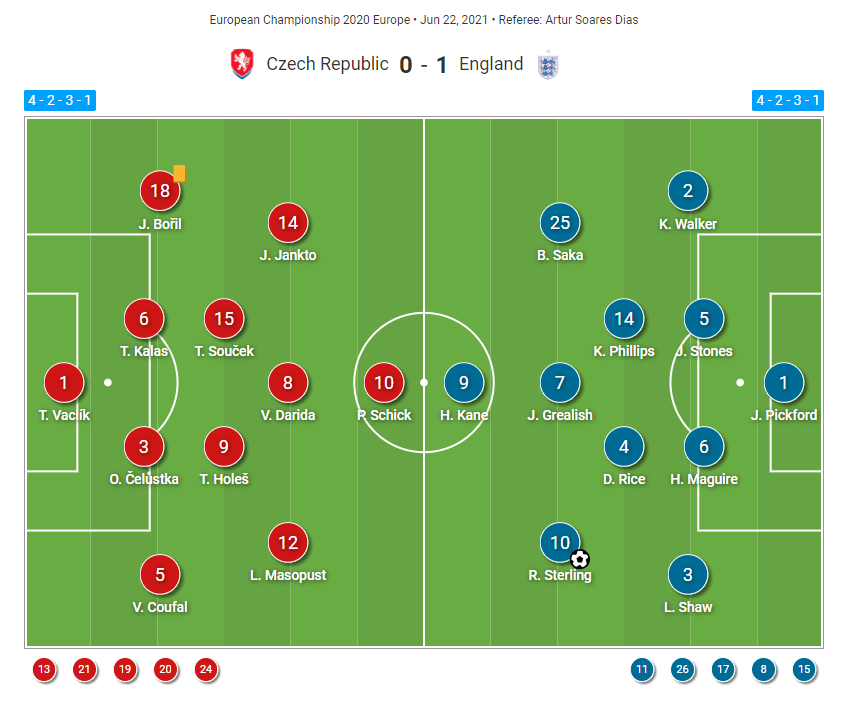
The Czech Republic went out in a 4-2-3-1 formation with Tomáš Vaclík on the goal and a four-man defensive line of Jan Bořil, Tomáš Kalas, Ondřej Čelůstka and Vladimír Coufal. In midfield they had Tomáš Souček and Tomáš Holeš with the captain Vladimír Darida being an attacking support behind the striker. The wings were covered by Jakub Jankto and Lukáš Masopust, while the centre of the attack was occupied by Patrik Schick.
For England, there were quite a few changes compared to their goalless draw against Scotland. Southgate ditched the 4-3-3 formation in favour of the 4-2-3-1, providing the players with more freedom and allowing the full-backs to appear more in attack and relying most on players that play the Premier League. Jordan Pickford covered the goal with the support of a changed defensive line. Luke Shaw was again trusted on the left-back, but Reece James was replaced by Kyle Walker on the right. The biggest change, which turned out as an improvement was the central pair. Tyrone Mings was replaced by Harry Maguire who got back from injury and offered more than him, especially in terms of ball progression. He was paired with John Stones.
In midfield, Southgate relied on Kalvin Phillips and Declan Rice again, which becomes a promising partnership. As mentioned, the changes in the attack were the most prominent, with the coach giving Grealish a chance in a CAMF role behind Harry Kane, while Raheem Sterling and Bukayo Saka were employed on the left and right-wing respectively.
Although these changes made some areas look better for the Three Lions, they did struggle with giving away the initiative and losing control in the first half. The Czechs were dangerous in the first half and created a few goalscoring opportunities, but it was their shot inaccuracy that took a toll on them.
England were edgier in the first half, as their lost their attacking prowess in the second half and didn’t produce any attempts on the goal.
Grealish’s influence on ball progression and the final third actions
Having Grealish in the starting XI did change the dynamics of their attacking actions. While Mount would either get stuck in his actions out wide or get isolated centrally, the Aston Villa player was successful in his positioning and provided more options in the final third. He would mostly occupy the half-spaces but going out on the flank and moving back centrally into his No. 10 role was also important for the connection between the lines and for involving Kane more. He was key for ball progression and delivering the ball to the final third.
All attacking players were constantly making rotational changes, with Grealish going out wide, Kane dropping deeper and moving on the left and Sterling and Saka moving centrally. This helped them in ball progression and in dragging defenders out of position in the advanced areas.
Grealish most frequently combined with Shaw and Sterling in the wide areas which allowed the team to advance the ball, where he will then use his control and work under pressure to deliver it to Kane, ending up with 89% pass accuracy.
His four progressive runs in the game helped the team neutralize Czech’s first two lines of defence and deliver the ball to the edge of the box, where he’s either spread it out to show in efforts to engage defenders and create gaps or will combine with the Manchester City attacker in the half-spaces.
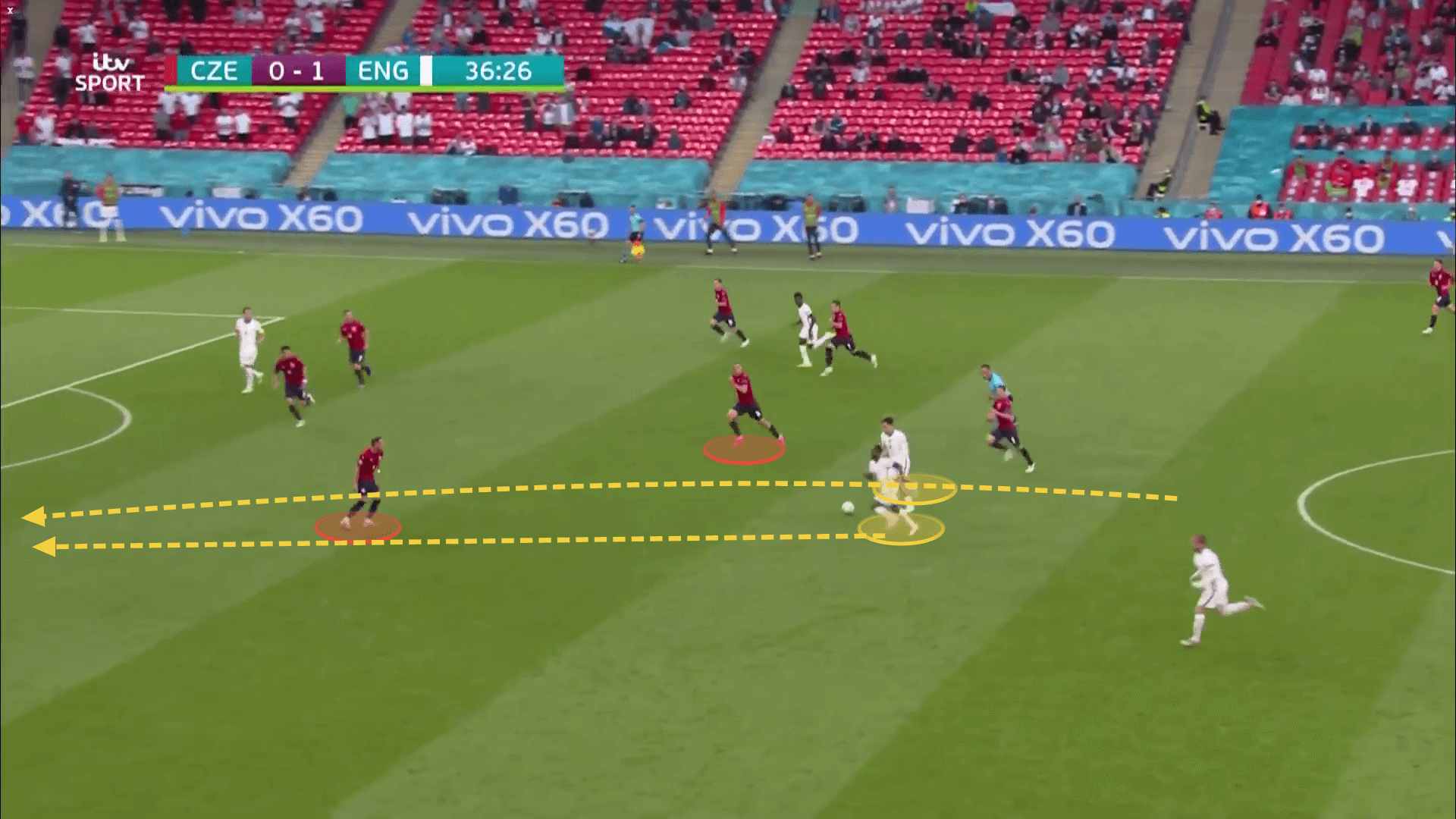
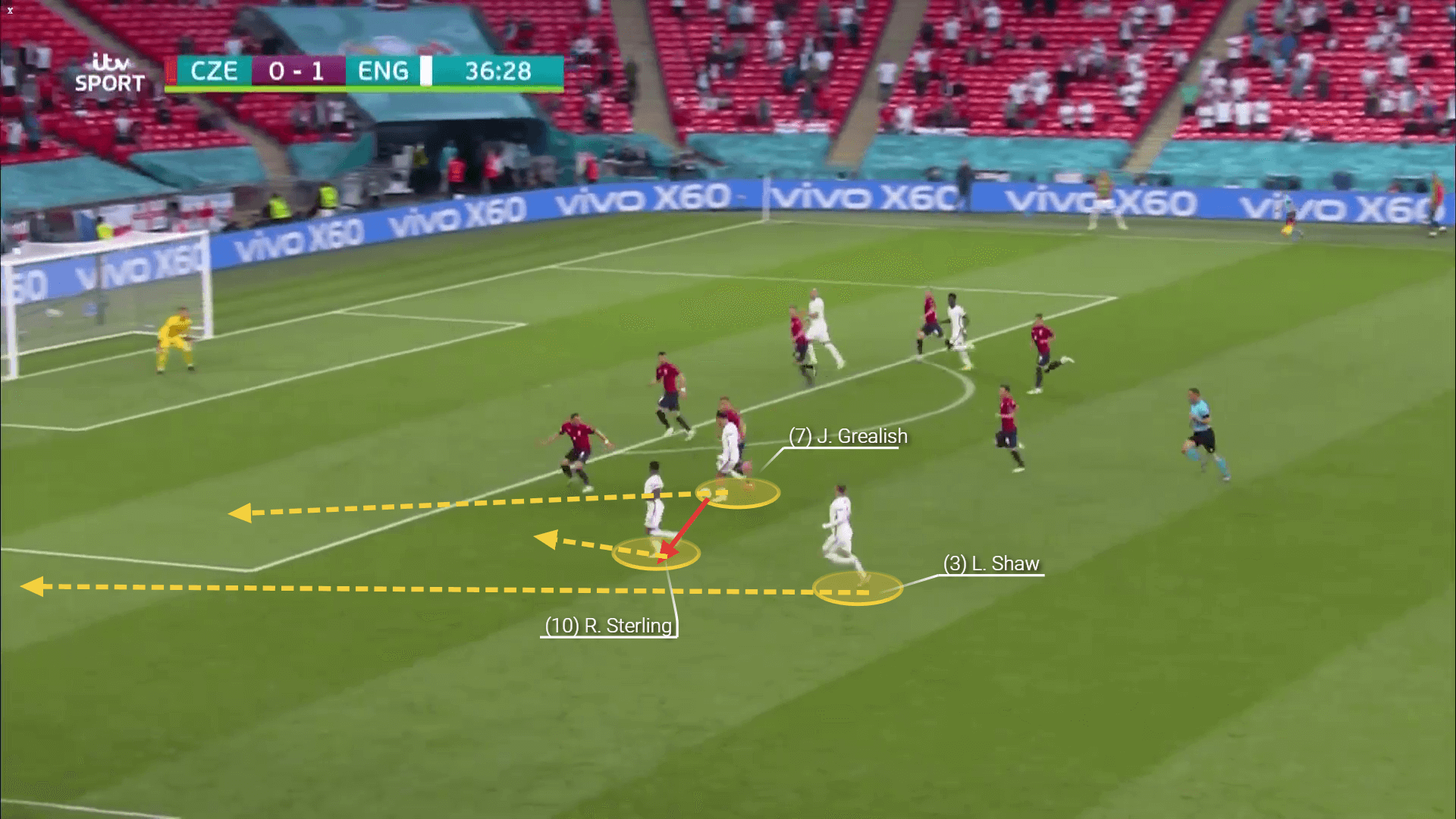
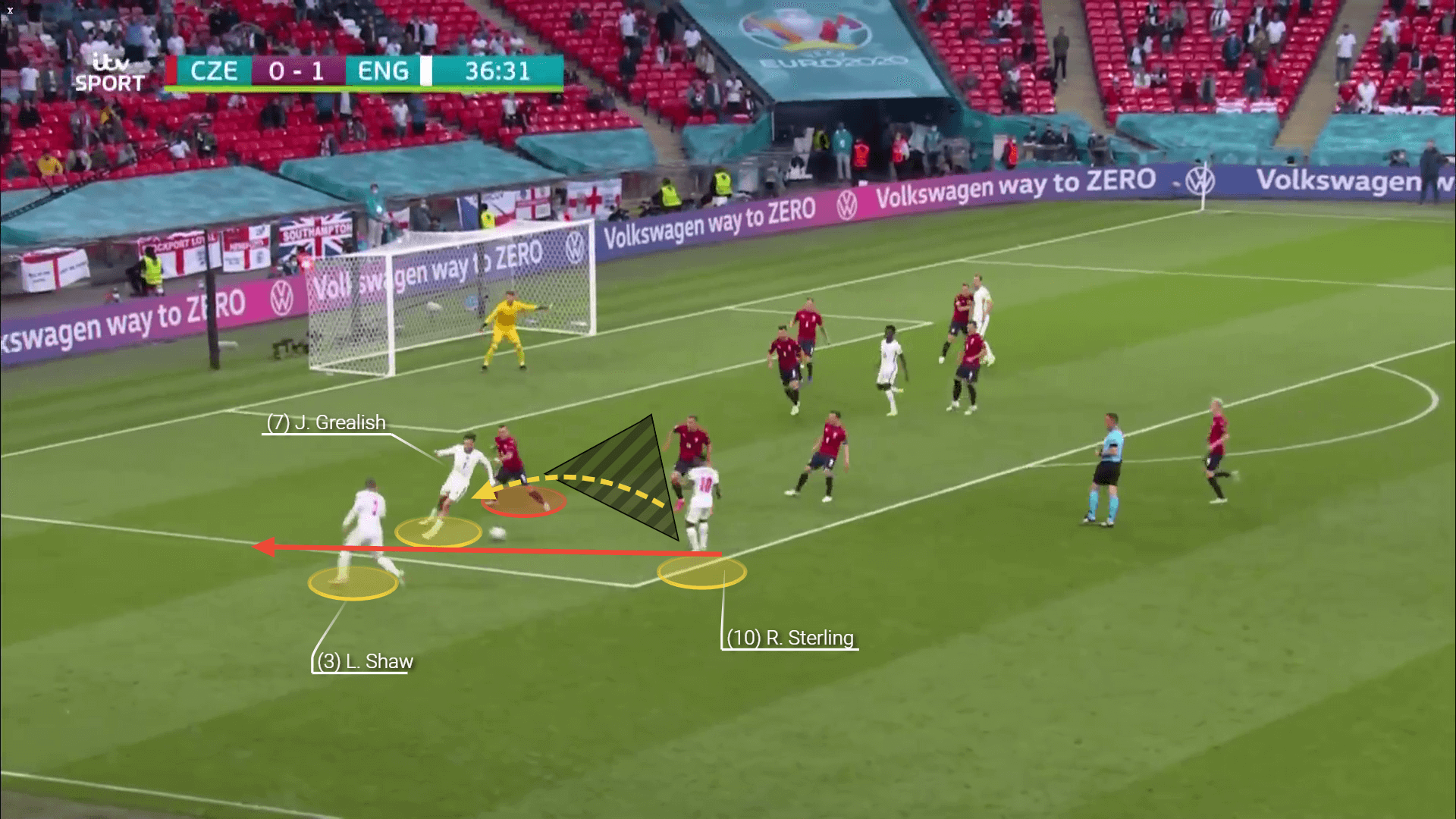
His movement increased Kane’s influence on the game much more than in their previous games. Even though the Tottenham player is yet to score in the tournament, Grealish’s presence in behind and the rotations the team did in the final third, made him more active and threatening in front of the goal. He had better chances on the goal. While previously he was isolated and managed to shoot only once in each game, he now had three shots with two of them being on target.
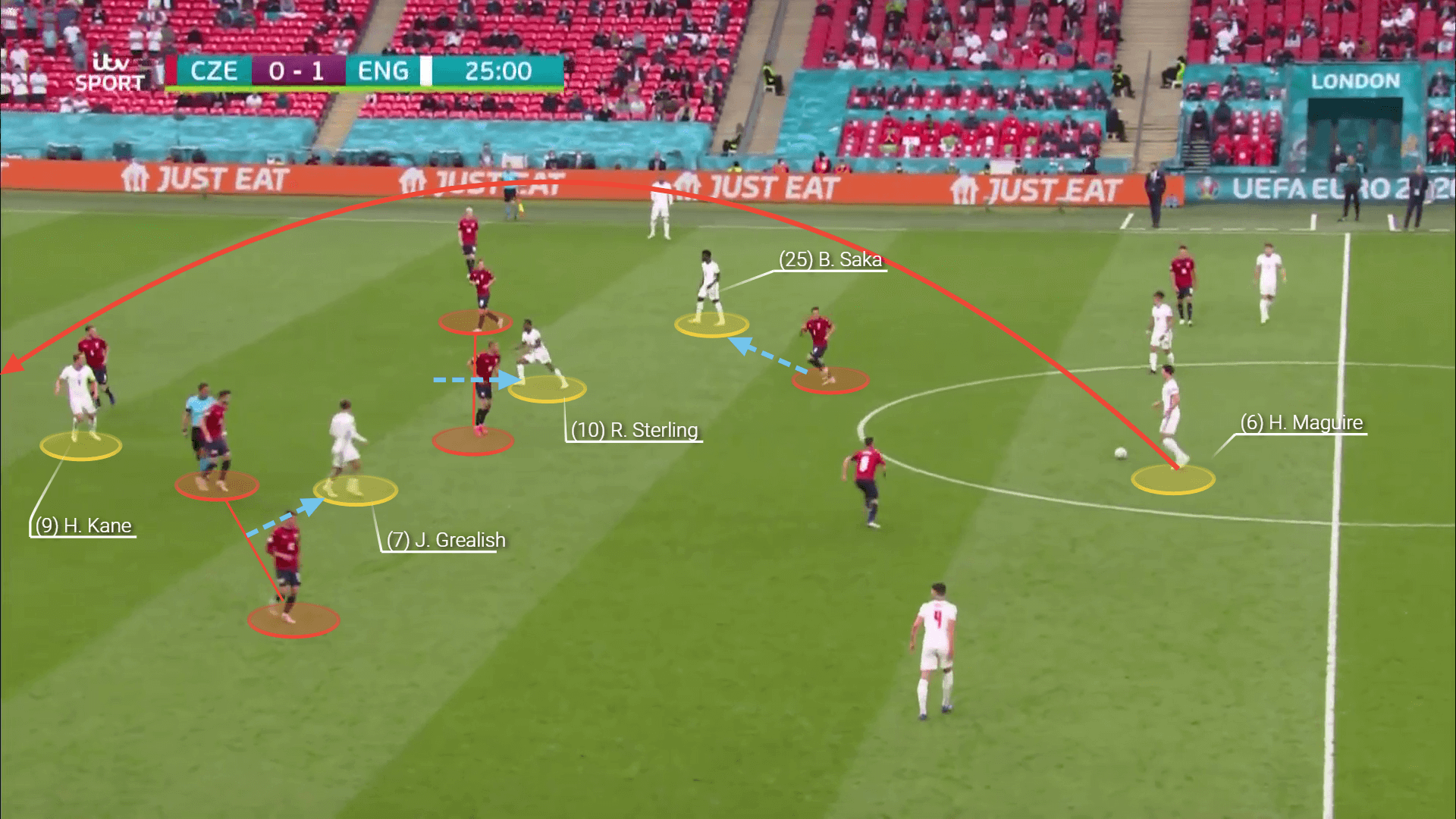
Saka’s eagerness on the ball and troubling the defenders
There are still many debates whether Bukayo Saka deserves a starting XI spot, instead of Jadon Sancho, who had a fantastic season with Borussia Dortmund. Southgate has been criticized on not starting Sancho, but it seems like that doesn’t bother him and he sees Saka’s potential better than the others.
He gave him a chance against the Czech Republic and the teenager didn’t disappoint winning the POTM award. While he doesn’t have Sancho’s distinguished passing abilities and finishing, Saka’s movement and eagerness to win the ball and to retain possession are impressive. He supported the ball progression immensely, constantly combining with the advanced Walker or with Phillips. He would drop closer to the central line to pick up the ball and then successfully deliver it to the advanced areas through progressive runs and dribbling, bypassing the opposition’s press. His contribution to retaining possession was crucial as he would often drop back and offer additional passing options to the back four. The Arsenal player is very suitable if Southgate’s tactics focus on having more of the ball and control the games.
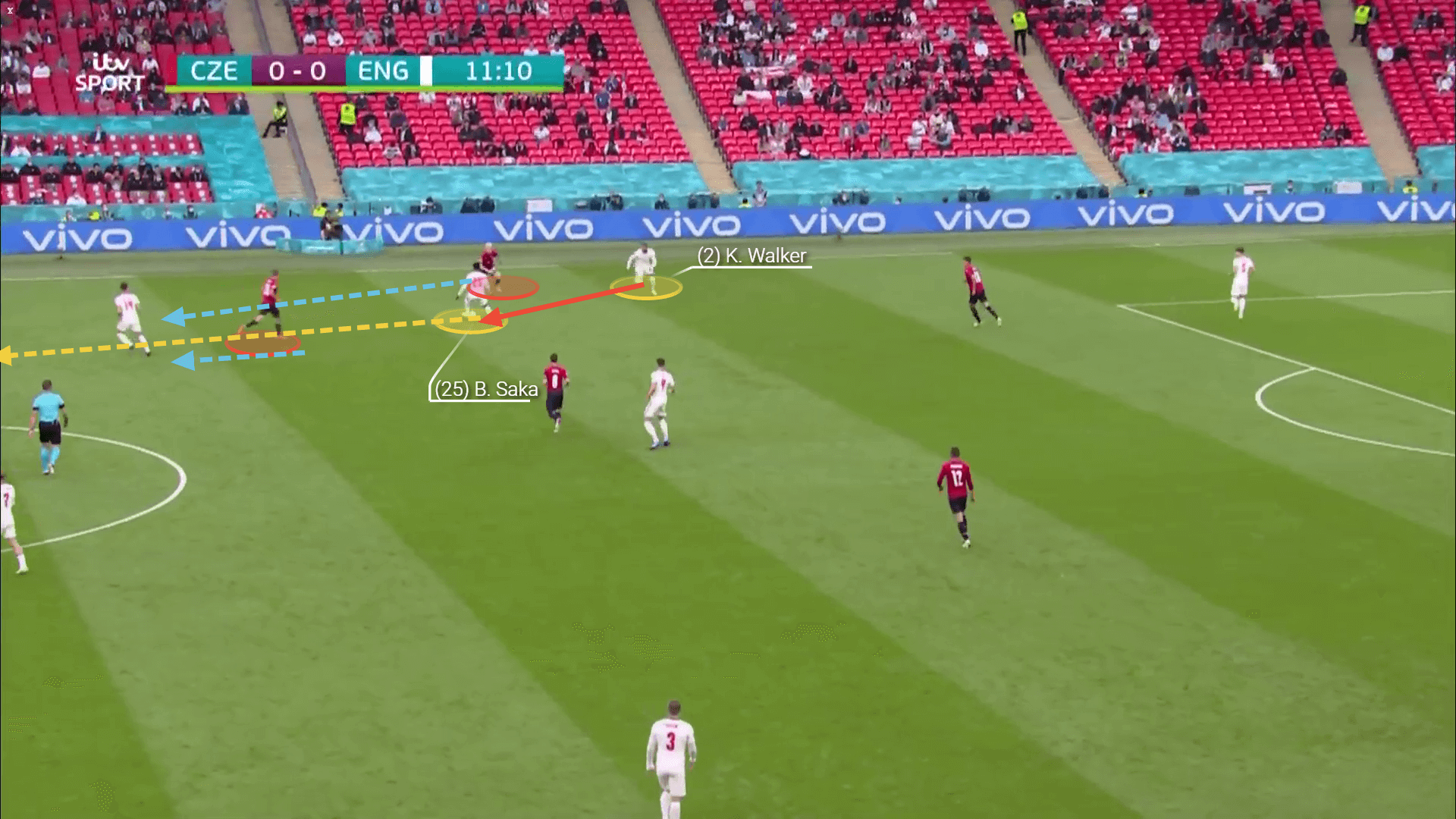
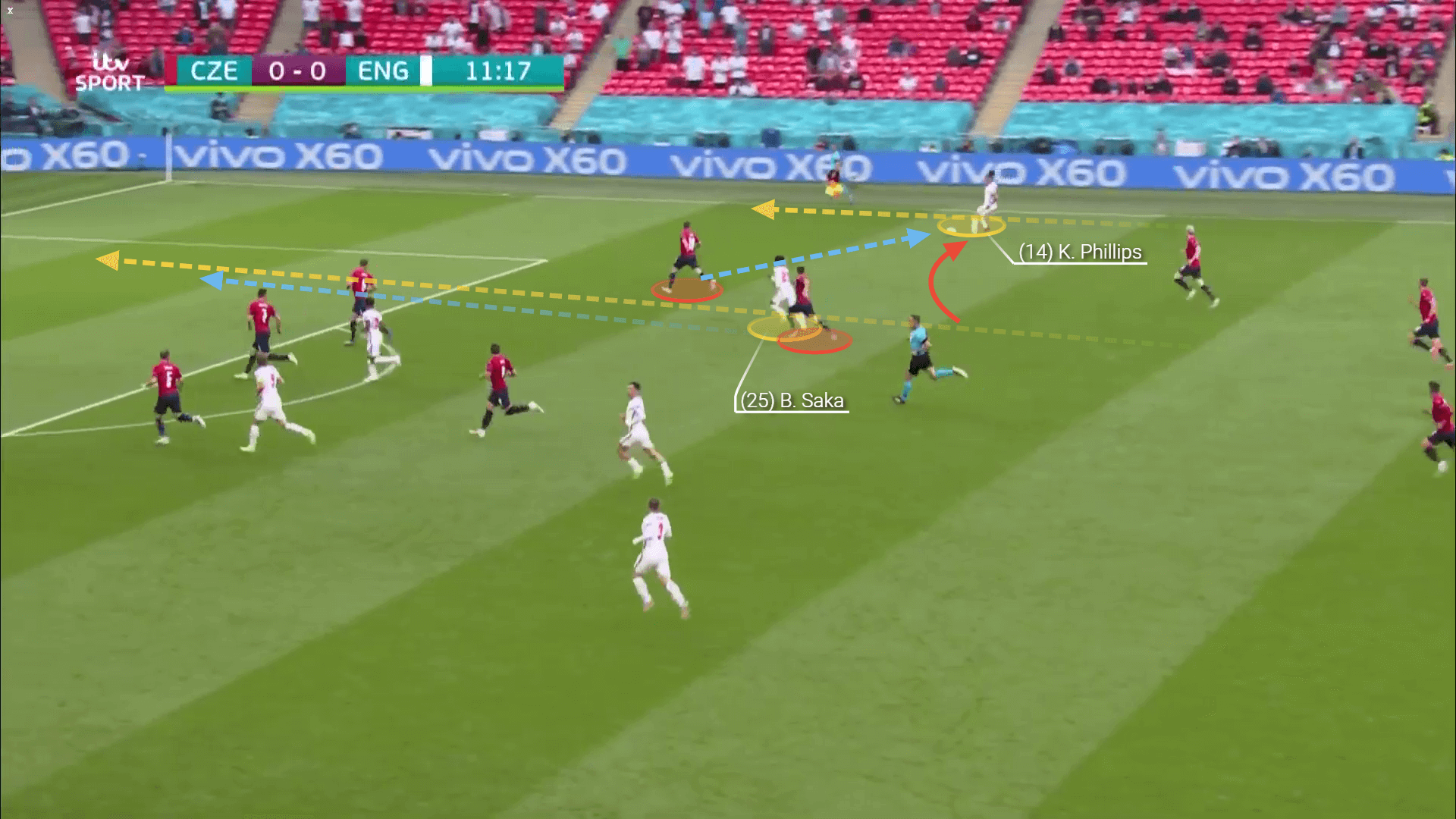
The 19-year-old provided width but also moved centrally in efforts to drag defenders. The left-back Bořil was constantly pressurized by him and was unable to cope with the youngster’s pace and control. The Czech finished the game with six lost defensive duels, which is the highest number among his teammates as 13/26 of England’s positional attacks were built through the right flank.
He brought explosiveness into the attack and forced chaotic actions by the Czechs in their efforts to stop him.
Maguire’s importance
As mentioned, there were a couple of changes in the back four that affected both their defensive performance and their build-up. Maguire’s presence next to Stones gave the team more confidence in retaining possession at the back. The team involved Pickford even more while the Manchester United defender was the main passing outlet used both for retaining possession and for ball progression. This resulted in the team having more on the ball (57.97%) and having control in certain periods of the game.
He contributed to bypassing the press and delivering the ball directly to the advanced areas with nine passes to the final third and 30 of his 72 passes being targeted forward. His positioning and passing allowed the team to move into a more advanced position and allowed the full backs more freedom to join the attacking actions.
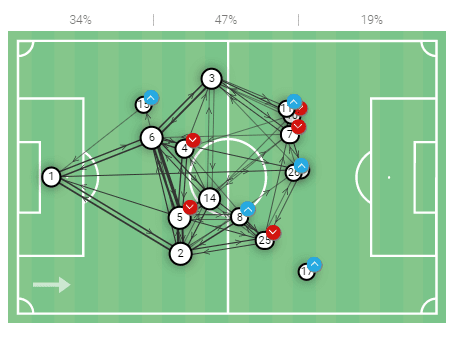
His presence of course was beneficial defensively too. Despite the opposition’s attacking actions, the team had the fewest defensive mistakes that led to the opposition shooting compared to their previous games.
Shaw started his second game in the tournament and proved to be a great solution in Ben Chilwell’s absence. The 4-2-3-1 set-up and the rotational changes upfront allowed him to support the attacking actions by advancing further up the pitch. He was solid defensively too and didn’t allow their opponents to create quality chances on the right losing only one of his seven defensive duels.
Final thoughts
While England didn’t have more chances on the goal compared to their previous games, they were far more creative and threatening with all the movement and control Grealish and Saka had to offer which increased their efficiency in front of the goal and resulted in more shots on target. Their presence into the starting XI also helped Kane perform better.
Maguire’s presence also allowed more freedom in possession, which affected their attacking actions immensely.





Comments